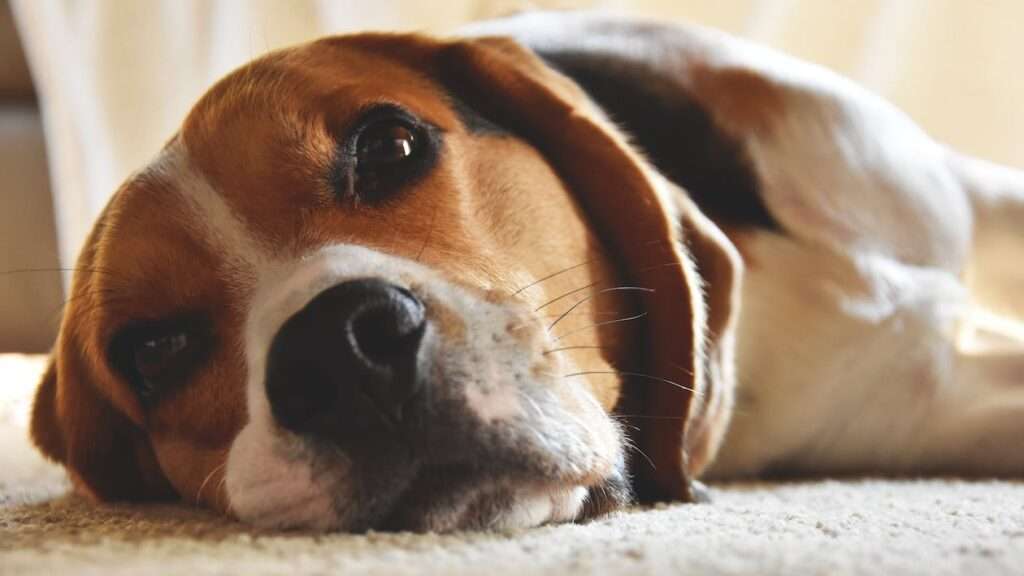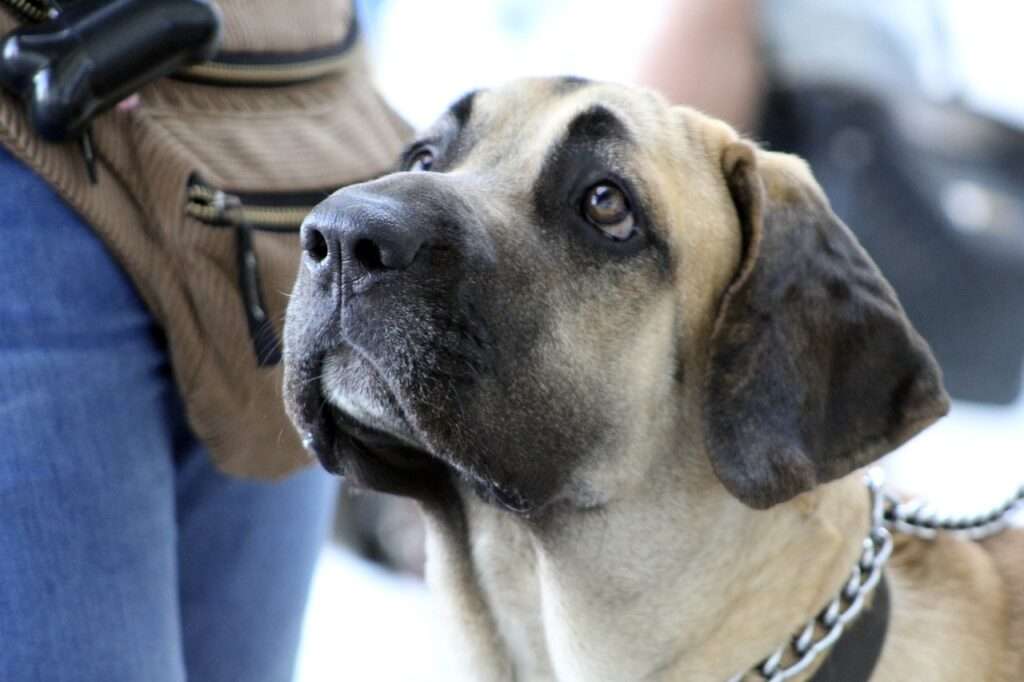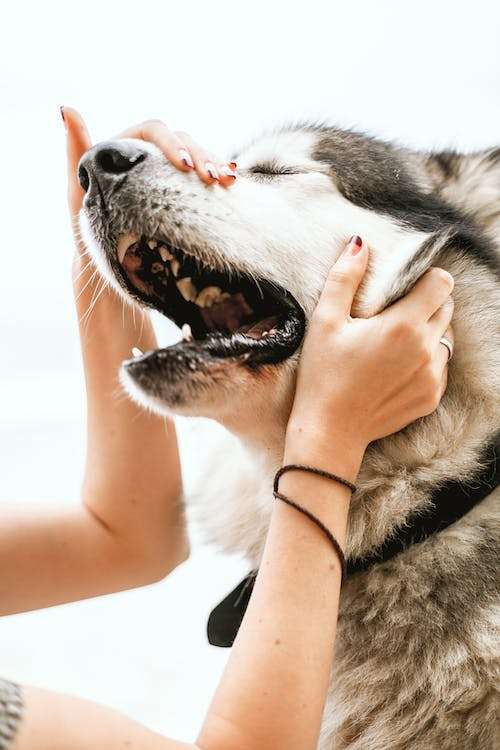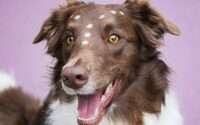Do Dog Whiskers Grow Back? The Answer May Surprise You
Welcome to BarkLikeMeow, where we embark on a captivating journey into the realm of dog whiskers. In this comprehensive article, we delve into the purpose of these intriguing sensory tools and answer the burning question: Do dog whiskers grow back after being cut or damaged?
Understanding the anatomy of your beloved pet and knowing how to properly care for their unique features is a crucial responsibility for any pet parent. Join us as we unlock the mysteries behind dog whiskers, exploring their remarkable functions and shedding light on their regenerative powers. Let’s dive into this fascinating world and gain insights that will deepen your connection with your furry friend.
What Are Dog Whiskers?
When it comes to our furry friends, there’s so much more to them than meets the eye. One aspect that often captures our curiosity is the presence of whiskers on dogs. These remarkable sensory hairs, scientifically known as vibrissae, are not just adorable features—they are essential tools that shape a dog’s daily life and perception of the world.
Positioned strategically on a dog’s muzzle, above their eyes, and on the jawline, whiskers are highly sensitive and can detect even the slightest changes in the environment. They act as a finely tuned radar system, providing dogs with invaluable information about their surroundings. By detecting subtle air currents and vibrations, whiskers offer a unique sensory experience that goes beyond what their eyes can perceive.
While dogs have between 200-300 whiskers grouped on either side of the nose, above the eyes, and on the chin, it’s their mystacial whiskers on the muzzle that play a particularly significant role. These whiskers are longer and stiffer than other hairs on the body, allowing them to function as an extension of a dog’s sense of touch. When a dog explores its environment, these mystacial whiskers come into play, alerting them to potential obstacles and helping them navigate tight spaces with ease.
The Role of Whiskers in a Dog’s Sensory Perception
Whiskers, those delicate sensory hairs on a dog’s face, play a crucial role in their sensory perception. Often referred to as “vibrissae,” these specialized hairs provide dogs with invaluable information about their surroundings. Let’s explore the remarkable role whiskers play in a dog’s sensory experience.
- Sensing Air Currents: Dog whiskers are incredibly sensitive to even the slightest changes in air currents. This allows them to detect movements and objects that may be too subtle for their eyes to perceive. By sensing air currents, dogs can navigate their environment with remarkable precision.
- Detecting Obstacles: Whiskers act as a tactile system that helps dogs detect potential obstacles in their path. When a whisker comes into contact with an object or a surface, it triggers a sensory response, alerting the dog to the presence of an obstacle. This mechanism allows dogs to make split-second adjustments, preventing collisions or accidents.
- Estimating Object Size and Shape: Whiskers provide dogs with a unique sense of object size and shape. By using the information gathered from the whiskers’ movement and touch, dogs can create mental maps of their surroundings. This spatial awareness helps them judge distances and navigate through tight spaces with ease.
- Enhancing Social Interactions: Whiskers also play a role in a dog’s social interactions. When interacting with other dogs or humans, dogs can use their whiskers to gauge the subtlest of movements and expressions. This enhanced perception contributes to their ability to interpret body language, leading to better communication and socialization.
Understanding the vital role whiskers play in a dog’s sensory perception allows us to appreciate their incredible capabilities. By ensuring the proper care and maintenance of whiskers, we can support their sensory experiences and help our furry friends navigate the world with confidence.
Can Dog Whiskers Be Cut or Damaged?
Although dog whiskers are designed to withstand some wear and tear, they can be cut or damaged in certain situations. Some common causes of cut or damaged dog whiskers include grooming accidents, getting caught on objects, and playing with other dogs.
When a dog’s whiskers are cut or damaged, it can cause discomfort and confusion for the animal. This is because dog whiskers are closely linked to their sensory system, and any damage to them can disrupt their ability to navigate their environment. In severe cases, damaged whiskers can cause dogs to become disoriented, anxious, and even aggressive.
Taking measures to safeguard your dog’s whiskers from harm is an essential aspect of being a responsible pet parent. This includes being mindful during grooming, keeping their environment free of hazards, and supervising them during playtime with other dogs. As responsible pet owners, we can ensure our dogs’ comfort by avoiding unnecessary trimming or handling of their whiskers.
Do Dogs Experience Discomfort or Pain When Losing Whiskers?

Losing whiskers is a natural part of a dog’s whisker growth cycle. While it may seem concerning, dogs generally do not experience discomfort or pain when their whiskers fall out or shed. In fact, the process is usually painless and goes unnoticed by the dog.
Whisker shedding occurs as part of the natural regrowth process. As old whiskers reach the end of their growth cycle, the hair follicles naturally release them to make way for new whiskers to emerge. This shedding process is similar to the shedding of fur and is not typically associated with discomfort or pain.
It’s important to note that excessive whisker loss or a sudden change in whisker appearance may indicate an underlying health issue. If you notice abnormal whisker loss or any accompanying signs of discomfort, such as redness, swelling, or skin irritation, it is recommended to consult a veterinarian. They can evaluate your dog’s condition and provide appropriate treatment if necessary.
Respecting the natural growth and shedding process of whiskers allows dogs to maintain their sensory capabilities without discomfort or pain. Remember, whiskers are an essential part of a dog’s sensory system, and by providing the right care and attention, we can support their overall well-being and enhance their experiences in the world.
Understanding the Whisker Growth Cycle
To fully grasp the dynamics of dog whiskers, it’s essential to delve into their growth cycle. Whiskers, like any other hair on a dog’s body, go through a continuous cycle of growth, rest, and replacement.
The growth phase, known as anagen, is when the whisker actively elongates. During this stage, the hair follicle nourishes and supports the whisker’s growth, allowing it to reach its full potential. This phase can last anywhere from several weeks to a few months, depending on the individual dog.
After the growth phase, whiskers enter a resting period called telogen. During telogen, the follicle remains inactive, and the whisker remains in place without growing any further. This resting phase typically lasts for several weeks.
Following telogen, the old whisker eventually falls out, making way for a new one to emerge. Shedding of whiskers is a natural and necessary process that allows for the regeneration of fresh, fully functional vibrissae. As the old whisker is shed, a new whisker begins its growth cycle, starting the process all over again.
It’s important to note that whiskers do not all shed at once. Instead, they follow an individual growth and shedding pattern, ensuring that a dog always has a set of functional whiskers. This staggered shedding and regrowth process help maintain a continuous sensory system for dogs to navigate their environment effectively.
Factors Affecting Whisker Growth
While dog whiskers are incredible sensory tools, they are not invincible and can be subject to damage or loss. Understanding the factors that affect whisker growth can provide insights into how to best care for your furry friend’s sensory apparatus.
Firstly, it’s important to note that dog whiskers have a natural growth cycle. Similar to other hairs on a dog’s body, whiskers have a growth phase followed by a resting phase before eventually falling out and being replaced by new ones. This cycle ensures that whiskers remain in optimal condition and continue to fulfill their sensory functions.
However, certain factors can influence the growth and health of a dog’s whiskers. Nutritional deficiencies, poor grooming habits, or underlying health conditions can all contribute to compromised whisker growth. Providing a balanced diet rich in essential nutrients, regular grooming to maintain whisker cleanliness and integrity, and keeping an eye out for any signs of health issues are all crucial for promoting healthy whisker growth.
It’s also worth noting that accidental damage or trimming of whiskers can occur during grooming or everyday activities. While whiskers will naturally grow back, it’s essential to be cautious and avoid unnecessary trimming or excessive handling of these sensitive sensory organs. Additionally, some breeds may have naturally more fragile or prone-to-break whiskers, requiring extra care and attention.
By understanding the importance of dog whiskers and the factors that affect their growth, we can appreciate the vital role these sensory hairs play in our canine companions’ lives. As responsible pet owners, it’s our duty to ensure their whiskers remain healthy, allowing them to navigate their world with ease and finesse.
Do Dog Whiskers Grow Back and How Long Does It Take?

Pet owners are curious about whether their dog’s whiskers grow back after being cut or damaged. The great news is that dog whiskers are built to regenerate, and they will usually grow back in a few months after being cut or damaged.
The mechanism of regrowing dog whiskers is similar to regrowing hair on other parts of the body. After a whisker is cut or damaged, the hair follicle enters a resting stage before regenerating and growing a new whisker. The duration of time it takes for a whisker to regrow varies based on factors such as the dog’s age, breed, and overall health.
The duration for dog whiskers to grow back can vary depending on various factors, including the individual dog’s breed, age, and overall health. On average, it takes approximately 2 to 3 months for a dog’s whiskers to fully regrow after they have been shed or accidentally damaged.
During the growth phase, the hair follicles actively nourish and support the whisker’s development. Patience is key when waiting for whiskers to grow back, as the process follows a natural timeline that cannot be rushed. It’s important to provide your dog with a balanced diet and ensure their overall health is in good condition to support the regrowth of healthy whiskers.
It’s worth noting that puppies may experience faster whisker growth compared to adult dogs. As puppies go through their growth stages, including the development of their sensory organs, their whiskers tend to regenerate more quickly. However, this can still vary from one individual puppy to another.
It is also essential to remember that specific factors can delay or obstruct the regrowth process, such as underlying health problems, poor nutrition, and continuous damage to the hair follicles. If your dog’s whiskers are not growing back as expected, or if they seem to be experiencing discomfort or other issues associated with their whiskers, seek veterinary care. They can assess your dog’s health and provide guidance on supporting the natural regrowth process.
Common Reasons for Whisker Loss
Whisker loss can occur for various reasons, and it’s crucial to identify the underlying cause to address any potential concerns. While it’s normal for a few whiskers to be shed naturally as part of the growth cycle, excessive or sudden whisker loss may warrant further investigation.
One common cause of whisker loss is accidental damage. Dogs can accidentally break or trim their whiskers while exploring tight spaces, squeezing through narrow openings, or engaging in rough play. In most cases, these whiskers will eventually grow back, but it’s important to ensure your dog’s environment is safe and free from potential hazards.
Improper grooming practices can also contribute to whisker loss. Trimming or cutting a dog’s whiskers for cosmetic reasons is strongly discouraged as it disrupts their sensory abilities and can lead to discomfort. Proper grooming should focus on maintaining the health and cleanliness of the whiskers without compromising their length or integrity.
Certain medical conditions can also lead to whisker loss. Allergies, infections, hormonal imbalances, and autoimmune disorders are examples of underlying health issues that can affect the growth and condition of a dog’s whiskers. If you notice excessive whisker loss or other concerning symptoms, it’s essential to consult a veterinarian for a proper diagnosis and treatment plan.
How to Take Care of Your Dog’s Whiskers

Caring for your dog’s whiskers goes beyond simply allowing them to grow back naturally. Taking proactive steps to maintain the health and condition of their whiskers can contribute to their overall well-being. Here are some essential tips for whisker care:
- Balanced Diet: Providing a balanced and nutritious diet is essential for overall hair health, including whiskers. Ensure your dog’s diet contains high-quality proteins, vitamins, and minerals to support optimal hair growth.
- Avoid Trimming: As mentioned earlier, resist the temptation to trim or cut your dog’s whiskers. They serve a crucial sensory purpose, and trimming them can disrupt their natural function.
- Gentle Brushing: Incorporate gentle brushing into your dog’s grooming routine. This helps keep their whiskers clean and free from debris that can affect their sensitivity.
- Provide Enrichment: Engaging your dog in stimulating activities can help keep their whiskers active and functional. Activities such as scent games, puzzle toys, and outdoor exploration provide sensory stimulation that benefits their overall well-being.
- Regular Check-ups: During your regular veterinary visits, ensure that your vet examines your dog’s whiskers as part of their overall examination. This helps identify any potential issues or abnormalities that may require attention.
- Environmental Awareness: Be mindful of your dog’s surroundings to prevent accidental damage to their whiskers. Avoid exposing them to situations where their whiskers could get caught or crushed, such as tight spaces or excessive rough play.
By incorporating these care practices into your dog’s routine, you can promote the longevity and effectiveness of their whiskers, enhancing their sensory experiences and overall quality of life.
Do Different Dog Breeds Have Different Whisker Regrowth Rates?
When it comes to whisker regrowth rates, different dog breeds may exhibit variations. While the overall regrowth process remains the same, factors such as genetics, breed characteristics, and individual differences can influence the speed at which whiskers grow back.
Some breeds are known to have faster whisker regrowth rates than others. Puppies of certain breeds, such as the Schnauzer, may experience more rapid regrowth due to their genetic predisposition. Conversely, breeds with slower hair growth patterns may also exhibit a slower rate of whisker regrowth.
It’s important to note that individual variations within a breed can also impact whisker regrowth rates. Each dog is unique, and factors like age, overall health, and specific hair growth patterns can contribute to differences in the regrowth process.
Regardless of breed, it’s crucial to provide optimal care and support for whisker regrowth. By following the tips mentioned earlier, you can create an environment conducive to healthy whisker development, ensuring that your dog’s sensory capabilities are at their best.
Understanding the potential variations in whisker regrowth rates among different breeds allows you to appreciate the uniqueness of each dog. Regardless of the specific regrowth timeline, providing the necessary care and attention to your dog’s whiskers ensures their overall well-being and ability to navigate the world around them.
The Fascinating World of Whiskers in Dogs
Whiskers, those remarkable sensory hairs on a dog’s face, are truly fascinating. Beyond their functional purpose, whiskers hold many intriguing characteristics that make them a subject of interest for researchers and dog enthusiasts alike. Let’s delve into the captivating world of dog whiskers.
- Whisker Variations: Whiskers come in different shapes and sizes, varying from short and straight to long and curly. Some dogs may have whiskers that are more pronounced or abundant, while others may have whiskers that are finer and less noticeable. These variations add to the uniqueness of each dog and contribute to their individual sensory experiences.
- Sensory Adaptation: Whiskers possess an incredible ability to adapt to different environments and stimuli. They can adjust their sensitivity based on factors such as air density, temperature, and the presence of certain substances. This adaptive feature enables dogs to gather information effectively in various conditions, enhancing their sensory perception.
- Whisker Growth Pattern: Whiskers do not grow randomly on a dog’s face. They follow specific patterns, typically arranged in rows on either side of the muzzle. These patterns are thought to optimize the coverage and efficiency of sensory input, allowing dogs to gather information from a wide range of angles.
- Sensory Superpowers: Whiskers provide dogs with a sensory superpower that extends beyond what humans can perceive. Their ability to detect subtle movements, navigate in the dark, and sense changes in air currents gives dogs an advantage in their environment. Whiskers act as an additional tool, enhancing their overall perception and helping them make informed decisions.
The world of dog whiskers is truly intriguing, and ongoing research continues to uncover more about their complexities. By understanding and appreciating the significance of whiskers, we can gain a deeper admiration for the incredible sensory abilities of our canine companions.
Conclusion
In conclusion, dog whiskers are remarkable sensory tools that enable our canine companions to navigate the world around them with precision and confidence. They serve as a crucial extension of their senses, providing valuable information about their environment and enhancing their overall perception.
While whiskers are designed to withstand some level of wear and tear, it is our responsibility as pet owners to prioritize their care and well-being. By understanding the importance of whiskers and implementing proper maintenance, we can help prevent damage and promote healthy regrowth if necessary.
If your dog’s whiskers become damaged, it is advisable to seek veterinary care to ensure their proper regeneration. Your veterinarian can provide guidance tailored to your dog’s specific needs and ensure that any underlying issues are addressed.
By implementing the suggestions for caring for your dog’s whiskers outlined in this article, you can take an active role in promoting their overall health and well-being. Remember, the proper care and respect we give to our dog’s whiskers can contribute to their overall sensory experience and strengthen the bond we share with our furry companions.
Frequently Asked Questions
Q: Can you cut dog whiskers?
A: It’s generally not recommended to cut or trim your dog’s whiskers, as they play a vital role in their sensory perception. Whiskers should be left to grow naturally.
Q: Do dog whiskers grow back if they are accidentally cut?
A: Yes, dog whiskers have the ability to regrow if they are accidentally cut or damaged. However, the regrowth process may take some time.
Q: What are the effects of cutting dog whiskers?
A: Cutting a dog’s whiskers can cause stress and disorientation as whiskers are sensory tools that help dogs understand their environment. It can affect their spatial awareness and ability to navigate around obstacles.
Q: Are dog whiskers sensitive or painful?
A: Dog whiskers are highly sensitive, but they are not typically painful for dogs. Avoid pulling or tugging on them, as this can cause discomfort.
Q: Should I clean or groom my dog’s whiskers?
A: It’s best to leave your dog’s whiskers untouched, as they are self-maintaining. Avoid using any harsh chemicals or products near the whisker area.
Q: Do all dog breeds have whiskers?
A: Yes, all dog breeds have whiskers. However, the length and thickness of whiskers can vary between breeds.
Q: What should I do if my dog’s whiskers don’t seem to be growing back?
A: If you notice that your dog’s whiskers are not regrowing after an extended period, it’s advisable to consult with a veterinarian. They can assess your dog’s health and provide guidance.
Q: Can I enhance my dog’s whisker growth?
A: Whisker growth is a natural process, and there are no specific ways to enhance it. Providing a healthy diet and overall good care for your dog can support optimal whisker growth.
Q: Are dog whiskers purely decorative?
A: No, dog whiskers serve a functional purpose. They help dogs navigate and sense their surroundings, aiding in depth perception and detecting movements.
Q: Are dog whiskers different from cat whiskers?
A: Dog whiskers and cat whiskers are similar in function but can vary in length and thickness. Both species rely on their whiskers for sensory perception.




